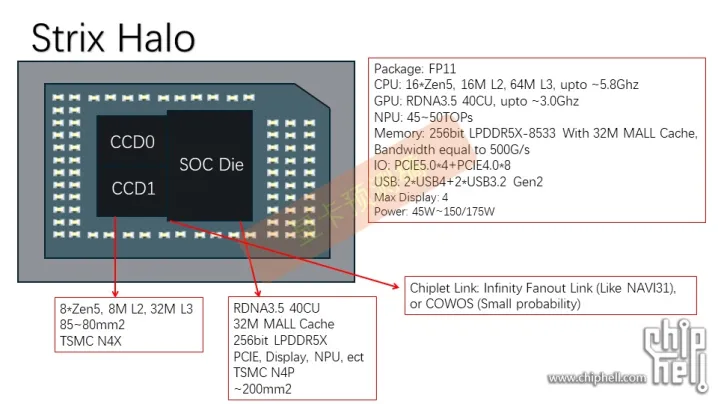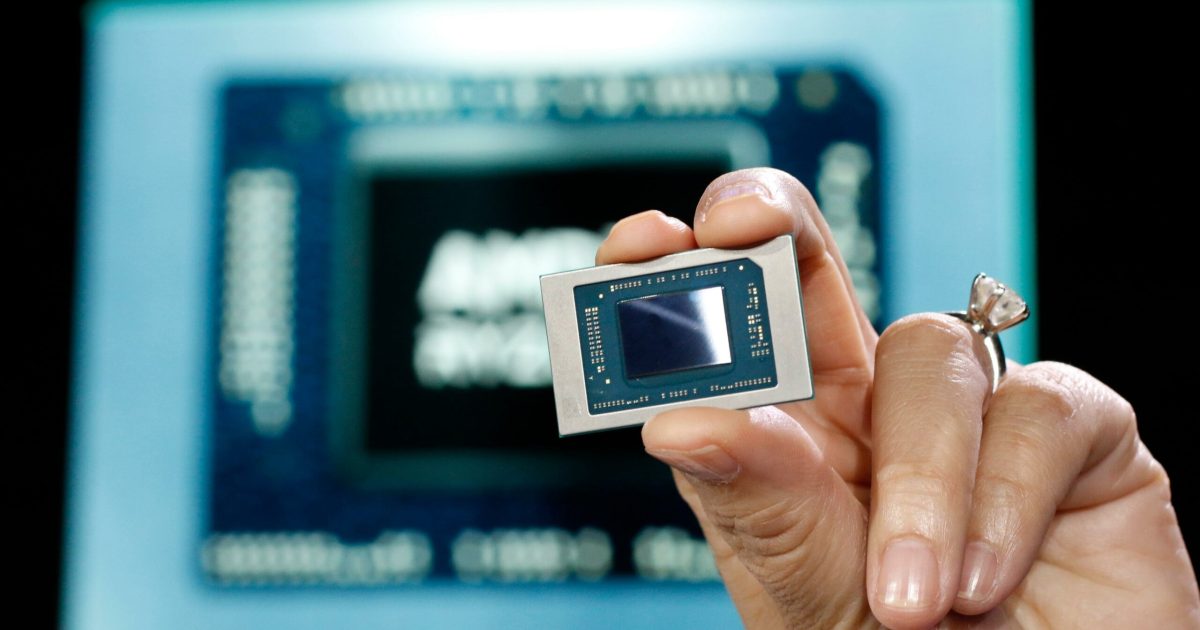Recent rumors on the Chiphell forums suggest that AMD’s upcoming Zen 5 laptop chips, code-named Strix Halo, could offer impressive performance with 40 Compute Units of AMD’s RDNA 3.5 graphics architecture, exceeding what’s in the PlayStation 5.
The forum post details two variants, one with 16 cores and 40 CUs, and the other with 12 cores and 32 CUs. Performance estimates shared in the post indicate that the chip with 40 CUs could perform similarly to an RTX 4060 Ti desktop GPU in 3DMark Time Spy.
While these specifications sound promising, they are still unconfirmed rumors. AMD has indirectly acknowledged the Strix Halo existence but has not verified the specs or performance claims.

Additionally, the post mentions that the GPU could boost up to 3GHz, surpassing the clock speed of the PS5. Other factors like memory capacity and bandwidth will also influence the APU graphics performance, making it an impressive potential if accurate.

Get your weekly teardown of the tech behind PC gaming
A leaked chip layout on Chiphell reveals that the GPU is significantly larger than the CPU dies, with the GPU measuring around 200m² compared to the CPU dies at 80-85mm² each. The 16-core version is expected to use two CPU dies and achieve a maximum clock speed of 5.8GHz.
With shared memory between the CPU and GPU like current-gen consoles, these chips are rumored to have a 256-bit memory interface using LPDDR5X-8533, providing a bandwidth of approximately 500GB per second, mirroring console configurations.
Rose-tinted specs?

While AMD has experience with high-performance APUs in gaming consoles and handheld devices, the challenge for the rumored Strix Halo chips could be managing thermal constraints in portable PCs compared to dedicated gaming consoles.
These alleged APUs are rumored to target high-end gaming laptops with robust cooling solutions, potentially limiting their full performance potential due to space constraints. The expected launch of the Strix Halo in 2025 will provide more clarity on the validity of these rumors and the actual capabilities of these chips.
Editors’ Recommendations


